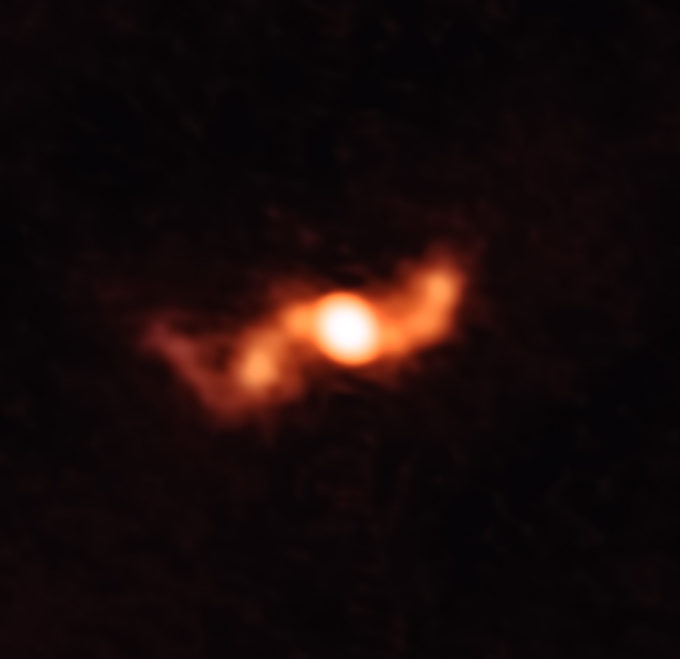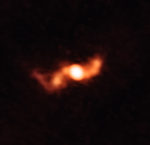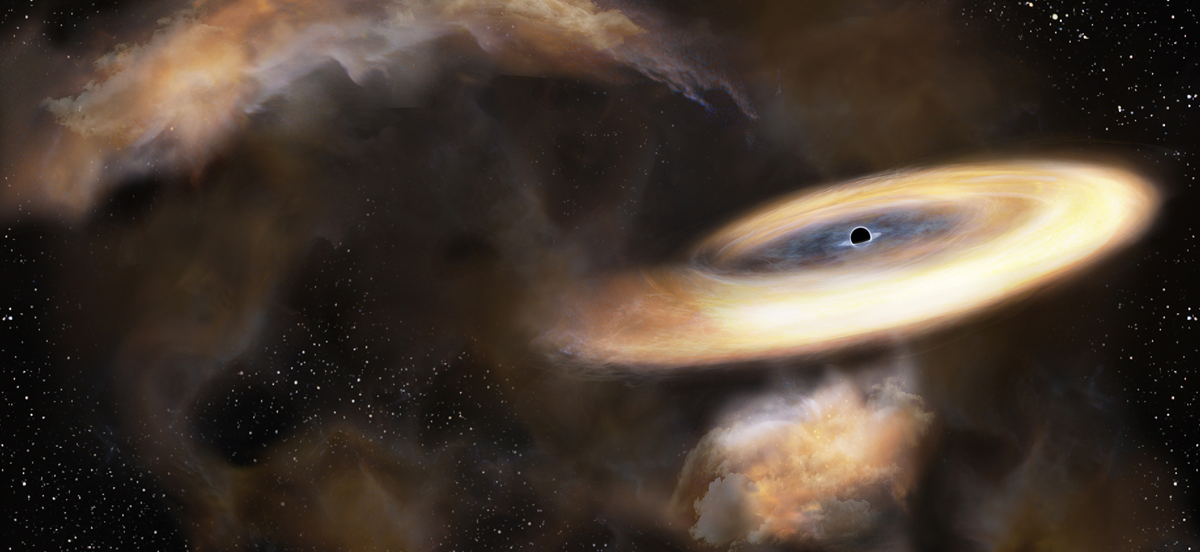A Game-Changer
This is SS 433, a microquasar first discovered forty years ago and located about 18 000 light-years away in the constellation of Aquila (The Eagle). This image, captured for the very first time at submillimeter wavelengths by the Atacama Large Millimeter/submillimeter Array (ALMA), is special because it shows the jets emitted by a hot, swirling disc of material encircling the black hole at SS 433’s center. Owing to its relative proximity, SS 433 is a particularly useful object for researchers looking to learn more about microquasars and the jets they emit.
The corkscrew shape visible here is created by a phenomenon known as precession; as they move outwards through space, these two jets are slowly tumbling around an axis in a similar way to the motion of a gyroscope or a spinning top slowing down, the orientation of their rotational axes changing as they do so. The scale of this corkscrew is enormous, at 5000 times the size of the Solar System.
One remarkable aspect of this observation is that its detailed shape was entirely predicted from spectroscopic measurements by the Global Jet Watch telescopes in the preceding year before the ALMA observations were made. The sequence of these observations allowed researchers to make and test predictions about the paths the jets would take, representing a new milestone in the study of microquasars. The observations have also resolved the question of why the jets are still hot at such great distances from their origin — ALMA’s sensitivity enabled researchers to identify that reheating of the plasma occurs when successive jet surges expand and collide with one another.
Additional Information
The Atacama Large Millimeter/submillimeter Array (ALMA), an international astronomy facility, is a partnership of the European Organisation for Astronomical Research in the Southern Hemisphere (ESO), the U.S. National Science Foundation (NSF) and the National Institutes of Natural Sciences (NINS) of Japan in cooperation with the Republic of Chile. ALMA is funded by ESO on behalf of its Member States, by NSF in cooperation with the National Research Council of Canada (NRC) and the Ministry of Science and Technology (MOST) and by NINS in cooperation with the Academia Sinica (AS) in Taiwan and the Korea Astronomy and Space Science Institute (KASI).
ALMA construction and operations are led by ESO on behalf of its Member States; by the National Radio Astronomy Observatory (NRAO), managed by Associated Universities, Inc. (AUI), on behalf of North America; and by the National Astronomical Observatory of Japan (NAOJ) on behalf of East Asia. The Joint ALMA Observatory (JAO) provides the unified leadership and management of the construction, commissioning, and operation of ALMA.
Image

This is SS 433, a microquasar first discovered forty years ago and located about 18 000 light-years away in the constellation of Aquila (The Eagle). This image, captured for the very first time at submillimeter wavelengths by the Atacama Large Millimeter/submillimeter Array (ALMA), is special because it shows the jets emitted by a hot, swirling disc of material encircling the black hole at SS 433’s center. Credit: ALMA (ESO/NAOJ/NRAO)/K. Blundell (University of Oxford, UK), R. Laing, S. Lee & A. Richards, ApJ Letters.
Contacts
-
Nicolás Lira
Education and Public Outreach CoordinatorJoint ALMA Observatory, Santiago - ChilePhone: +56 2 2467 6519Cel: +56 9 9445 7726Email: [email protected] -
Mariya Lyubenova
ESO Outreach Astronomer



